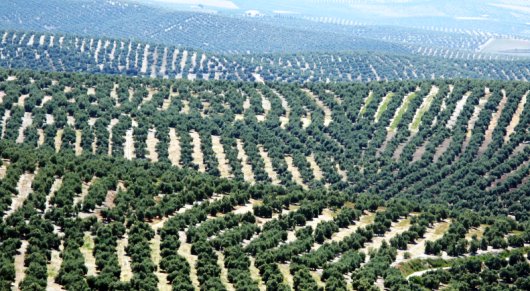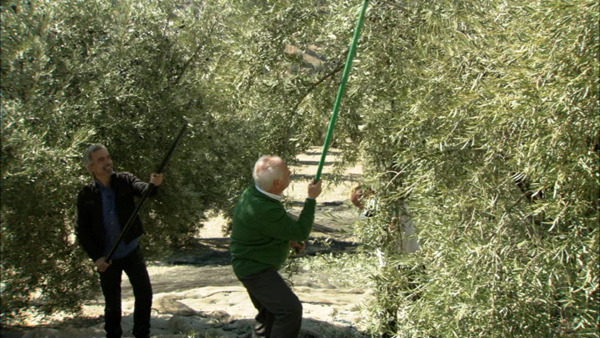Destination Spotlight
Jaén, Spain: Land of the Olive Tree
Like most Brits, I had spent many a childhood summer holidaying along Spain´s coastline, but when I went to live there, I found myself travelling up inland for the first time. I took a train from Málaga to Jaén, the northernmost region of Andalucia, and somewhere I had never even heard of until the letter had arrived telling me what school I would be teaching in the following year. As I watched the landscape gradually change from the window, about 50 miles inland I was presented with a rather strange sight. Row, upon row, upon row of a small bushy trees, stretching out in orderly lines in all directions, over hills, pushed up against roadsides and squeezed into every available nook and cranny. Naively I asked one of the gents having a coffee in the restaurant cart what these ubiquitous green blobs were, and he replied with an incredulous expression…OLIVOS!

I’d had my first look at Jaén’s unique landscape which contains more than 60 million olive trees, producing 43% of Spain’s olive oil and 28% of the world’s supply, and representing the most important oil producing region in the world! A superlative like this I’m sure you’ll agree is something to feel proud of, and the ‘Jinenses’ as people from Jaén are known, certainly do. I quickly became aware of the huge role in plays in society, as in honour of my arrival at the school there was a degustation morning where I could try the different oils of the local area. My standard mid-morning breakfast snack became a piece of toast covered in lashings of the stuff, and whereas at home I was used to using just a drop of the ‘liquid gold’ when cooking, here I was instructed to fill the bottom of the saucepan! Such liberal measures pose no problem here as there seems to be plenty to go around; every home I visited had huge 5 litre bottles stacked in the corner ready to fill up a variety of smaller pouring devices.
It is not only in cuisine where olive oil shows its influence, but also the local economy. During the harvest in December and January, it’s all hands on deck as everyone takes to the fields, including kids on their Christmas holidays and thousands of immigrants from Morocco who come every year to fill the labour void. However, in recent years with the combination of low crop yields and the economic crisis, immigrants have had less luck as there hasn’t even been enough work for the locals. It is very physically demanding, especially in the cold weather, but that Andalucian spirit and camaraderie makes it actually quite good fun, as I found out one weekend when a friend offered me a couple of days’ work, as one of their ‘cuadrilla‘ (team) had pulled out. I don’t know what he was thinking asking a weak little English girl along, but I’m glad he did…what an experience! I couldn’t walk down stairs without grimacing for a week afterwards, but it was a good laugh and a real insight.
My cuadrilla used traditional methods for collecting the olives, which involved the men hitting the branches of the tree with long sticks so the fruit falls to the ground. Then they either lay nets under the trees to collect them up, or somebody walks around with a leaf-blower type machine to group the olives into mounds. Enter the ladies…who scoop the olives into big buckets and carry them over to the tractor and pour them into the large container behind. More modern and mechanised techniques do exist, which involve wrapping a belt around the trunk of the tree and vibrating it, but this is not good for the roots of the tree, and so many farmers choose to continue with the traditional techniques in which labour makes up half of the production cost. The working day tends to run from 8 am till 2:30 pm, for which you are paid an amount set by the local government every year, which is usually around 50-60 euros. The morning also includes a couple of short breaks during which someone will inevitably crack open a bottle of red which is passed round for everyone to swig straight out of the bottle!

Hard work over, olives in tow, they are normally taken to factories which function as co-operatives, and farmers are paid directly according to the amount of kilos of olives they hand over. Individuals are also allowed to use the cooperatives, and it is common for young groups of friends to trawl the fields after the main collection has taken place, to pick up the leftover olives and get themselves a bit of pocket money! Only about 5% of olives are kept for actually eating, although they have to be soaked in water and herbs for weeks before you can enjoy them. The remaining 95% are pressed to make oil, taking around 1000 olives to make 1 litre. The first pressing tends to produce what we know as extra virgin olive oil, which is the richest in taste and should be used for salads and your morning toast, and not for cooking. Virgin oil is still good quality and, like the extra virgin contains no chemicals and zero acidity, although it has probably been heated up to make pressing easier, whereas the extra virgin is pressed cold. Regular and light olive oils have been refined, filtered and mixed with other oils. There is also an abundance of other products such as soaps, hand creams and shampoos, made from all the leftover bits of the olive such as the skin and pips, known as ‘orujo’.
Jaén is winning more and more awards for the high quality of the oils it produces, and the region exports internationally as far as the USA, China and Brazil. Oil producers are excited for the future, as they describe how olive oil, known for its health benefits as part of the Mediterranean diet, is conquering more and more cuisines worldwide. In the land of the olive tree, where the rocky soil and mountainous terrain make an ideal home for olive trees but very little else, this growth is plainly visible as trees continue to be planted in every available corner and hillside, even controversially encroaching into areas of national park. It seems they are taking over, and soon there will be no room for anything or anybody else! So get there quick – while there’s still space for visitors!
Want to take your class to Spain? Check out some of our Educational Tours to Spain.
Related Articles

The 2024 WorldStrides Student Photo & Video Contest Gallery
Like most Brits, I had spent many a childhood summer holidaying along Spain´s coastline, but when I went to live there, I found myself travelling up inland for the first time. I took a train fr...

Girl Scouts: Costa Rica Tour
Like most Brits, I had spent many a childhood summer holidaying along Spain´s coastline, but when I went to live there, I found myself travelling up inland for the first time. I took a train fr...

2024 Mérida Pride Parade
Like most Brits, I had spent many a childhood summer holidaying along Spain´s coastline, but when I went to live there, I found myself travelling up inland for the first time. I took a train fr...

Rise Up, Take Action: How to Support the LGBTQIA+ Community
Like most Brits, I had spent many a childhood summer holidaying along Spain´s coastline, but when I went to live there, I found myself travelling up inland for the first time. I took a train fr...

